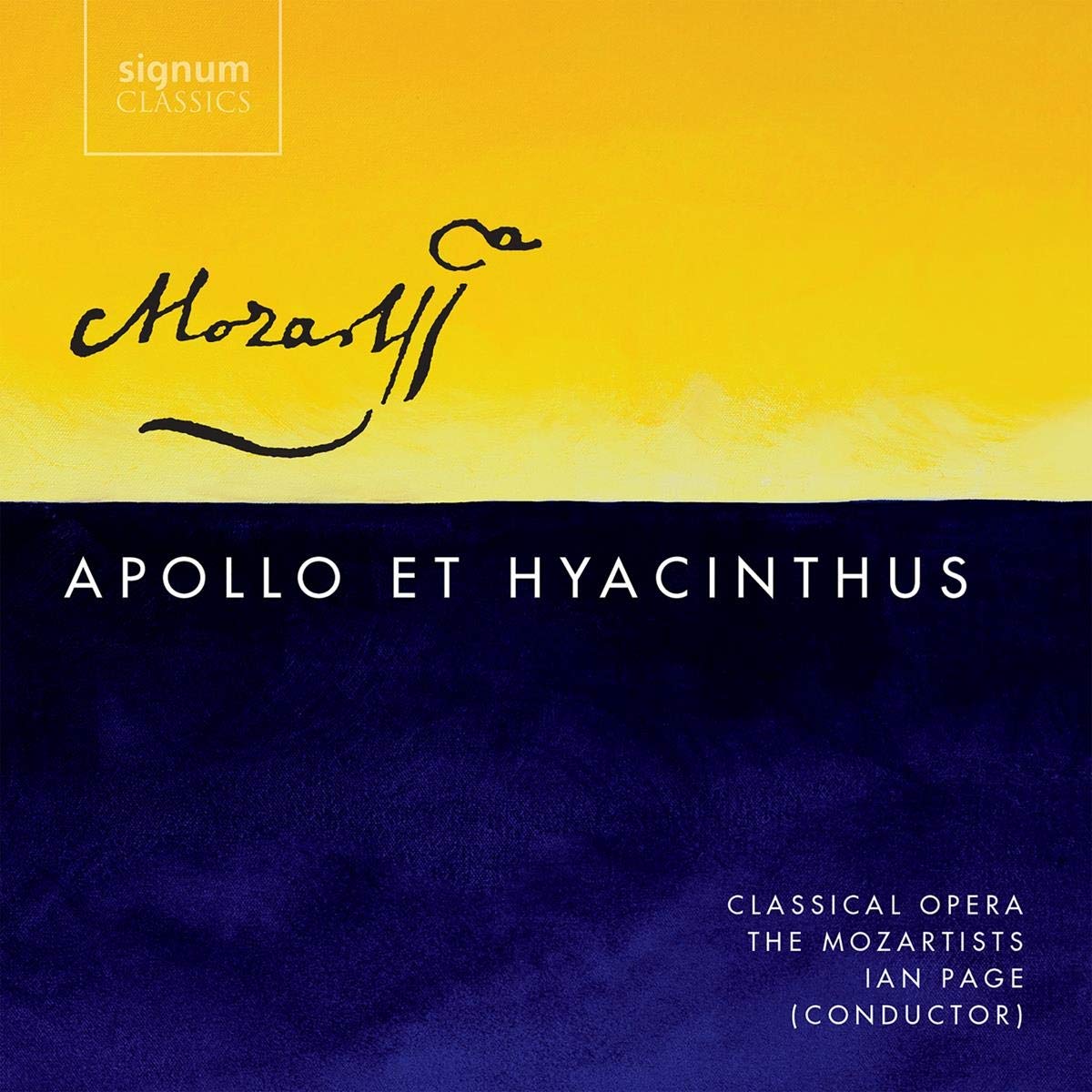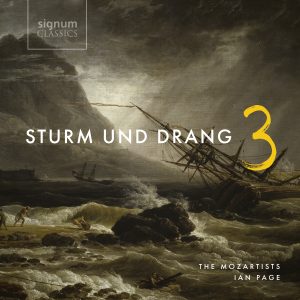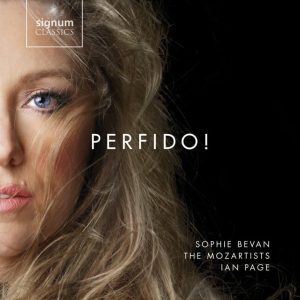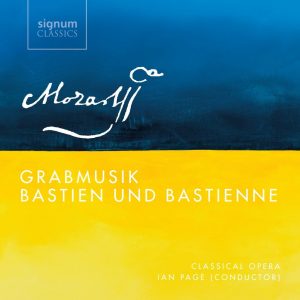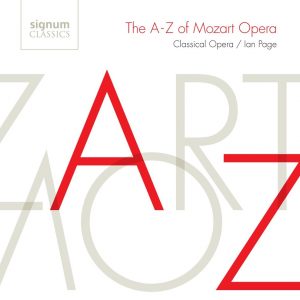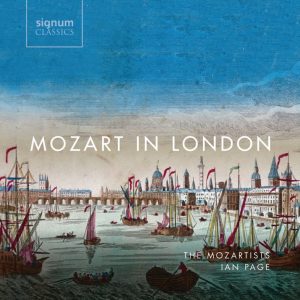“The Classical Opera Company’s polished début in Apollo et Hyacinthus proved a pearl beyond price. Here was a work of staggering beauty, riddled with sweet noises like Caliban’s enchanted isle.”
INDEPENDENT
Classical Opera’s recording of Apollo et Hyacinthus marked the launch of its major Mozart Opera Recording Cycle.
Apollo et Hyacinthus was written when the composer was only eleven years old. It is based on a tale from Ovid’s Metamorphoses and, unusually, is in Latin. The music is astonishingly accomplished, already revealing an extraordinary instinct and ability to capture the essence of each dramatic situation, and one can hear numerous pre-echoes of the masterpieces of Mozart’s maturity.
Classical Opera’s previous performances of the work have attracted unanimous critical acclaim.
“This is a fine achievement. Ian Page’s direction of Apollo carries rich promise of his ability to deliver a valuable contribution to historically-informed Mozart opera performance… Tempos, balance and phrasing all convey the impression we are in the company of that rare beast, an instinctive Mozartian.”
OPERA
CD 1
- Intrada (Allegro)2:41
- Recitativo: “Amice! jam parata sunt” (Hyacinthus, Zephyrus, Oebalus, Melia)2:53
- No. 1, Chorus: “Numen o Latonium” (Chor, Oebalus)4:26
- Recitativo: “Heu me! periimus!” (Melia, Oebalus, Hyacinthus, Zephyrus)1:24
- No. 2, Aria: “Saepe terrent Numina” (Hyacinthus)7:48
- Recitativo: “Ah nate! vera loqueris” (Oebalus, Apollo, Hyacinthus, Melia, Zephyrus)3:04
- No.3, Aria: “Jam pastor Apollo” (Apollo)3:46
- Recitativo: “Amare numquid filia” (Oebalus, Melia)1:49
- No. 4, Aria: “Laetari, iocari” (Melia)6:39
- Recitativo: “Rex! de salute filii” (Zephyrus, Oebalus, Melia)5:22
- No. 5, Aria: “En! duos conspicis” (Zephyrus)3:08
- Recitativo: “Heu! Numen! ecce!” (Zephyrus, Melia, Apollo)2:05
- No.6, Aria: “Discede crudelis” (Melia, Apollo)6:22
- Recitativo: “Non est – Quis ergo” (Hyacinthus, Oebalus)2:35
- No.7, Aria: “Ut navis in aequare” (Oebalus)6:16
- Recitativo: “Quocumque me converto” (Melia, Oebalus)2:56
- No.8, Duetto: “Natus cadit, atque Deus” (Oebalus, Melia)5:42
- Recitativo: “Rex! me redire cogit” (Apollo, Oebalus,Melia)4:49
- No.9, Terzetto: “Tandem post turbida fulmina” (Apollo, Melia, Oebalus)2:45
The opera is set in Laconia (Lacemaedonia) in ancient Greece.
Prologue
Hyacinthus, with the help of his friend Zephyrus, is making the final preparations for a sacrifice which has been ordered by his father, King Oebalus, in honour of the god Apollo. As storm clouds gather, Oebalus orders the sacrificial fire to be lit, and the people offer their prayers to Apollo. Their offering is seemingly rejected when lightning destroys the altar and extinguishes the fire, but Hyacinthus, suspecting that the wrath of the gods has in fact been aroused by Zephyrus’ earlier words of disrespect, offers comfort and encouragement to his father. Suddenly, Apollo himself appears, in the guise of a shepherd, having been banished from the heavens after an altercation with Jupiter. Melia is instantly enchanted by him, and the god assures Oebalus that their prayers will be answered.
Chorus I
W
hile Apollo, Hyacinthus and Zephyrus are throwing the discus together, Oebalus tells Melia that Apollo wishes to marry her. Melia rejoices in her great fortune and happiness, and rapturously anticipates being treated like a goddess. Zephyrus, though, rushes in to announce that Hyacinthus is dead. He has been killed during the discus game, and Zephyrus, although guilty of the murder himself, blames the crime on Apollo. Astounded, Oebalus goes in search of the god. Zephyrus insists that Apollo is evil, and tries to persuade Melia to marry him instead, but Apollo soon arrives. He punishes Zephyrus for his treachery by transforming him into a wind and having him dragged off to Aeolus’ cave. Still believing Apollo to be the murderer of her brother, Melia sees this act of retribution as further evidence of Apollo’s volatility and wickedness, and the two argue.
Chorus II
On the banks of the river Eurotas, Oebalus has discovered his son still alive. With his final words Hyacinthus tells Oebalus that it was Zephyrus, not Apollo, who killed him. Oebalus swears vengeance, his emotions fluctuating turbulently between anger and grief. Melia arrives to report that she has followed her father’s orders and banished Apollo from the kingdom. As they realise the truth, they express their anguish and fear at how they have wronged the god. Apollo returns, however, and expresses his love for Hyacinthus by transforming the boy’s dead body into a bank of flowers which will bear his name forever. He forgives Oebalus and Melia, and reaffirms his wish to marry Melia and stay with them on earth. After all the storms and sorrows, peace and joy finally reign.
Apollo et Hyacinthus – an introduction by Ian Page
Apollo et Hyacinthus, which was commissioned by the grammar school attached to Salzburg University and first performed there on 13 May 1767, was Mozart’s first opera. It was written when he was eleven years old. It is of course truly astonishing that anyone could write an opera of such quality at such an age, but in some ways the achievement is unsurprising, given how extraordinary Mozart’s childhood had already been up to that point.
By the time Mozart returned to Salzburg in November 1766, following his Grand Tour of Germany, Belgium, France, England, the Netherlands and Switzerland, he had already composed numerous symphonies, sonatas and arias. He had also performed at many of the leading courts and theatres in Europe, and equally importantly had been able to hear performances of music by many of the most celebrated composers of the day. Having spent barely a quarter of the previous five years in Salzburg, Mozart was now to remain there for ten consecutive months, and this period proved to be the most important and prolific to date in the young composer’s burgeoning career. A recitative and aria written to celebrate the Archbishop of Salzburg’s anniversary in December 1766 led to the commission for him to compose the first part of the sacred singspiel Die Schuldigkeit des ersten Gebots, which was performed in the Knights’ Hall of the Archbishop’s Palace on 12 March 1767, and this was soon followed by the remarkable Passion cantata Grabmusik. Such an imposing portfolio must have been increasingly difficult to ignore, and it was presumably a relatively uncontentious step to commission Mozart to write the music for Apollo et Hyacinthus.
Background
Since 1617 the grammar school attached to Salzburg’s Benedictine University had had a tradition of performing an annual Latin play, and in 1661 a theatre equipped with elaborate stage machinery had been erected adjacent to the university’s Great Hall. In addition to the annual event in August, individual classes sometimes presented their own productions – indeed the five-year-old Mozart, though not attached to the school, had taken part in a Latin school play there in 1761 – and in May 1767 the third year students at the Gymnasium performed a five-act Latin tragedy, Clementia Croesi (‘The Clemency of Croesus’). This was written by the Professor of Syntax at the university, a Benedictine monk named Rufinus Widl, and was based on a story from Herodotus. King Croesus of Lydia has engaged the exiled Phrygian prince Adrastus to educate his son Atys. In the original story Adrastus kills Atys in a hunting accident and then, overcome by grief, kills himself; Father Widl, though, adapted the plot to suit his pedagogic purposes, and had Adrastus being generously forgiven by Croesus and welcomed into his court. Over the years it had also become customary for a short musical entertainment or ‘intermedium’ to be interpolated within the main play; this was also in Latin, and provided relief from the high-minded didacticism of the main play while at the same time reinforcing its meaning and message. Thus it was that early in 1767 Mozart was commissioned to write the intermedium which was to accompany Clementia Croesi.
The text
The libretto was again by Father Widl, and the subject was the mythological story of Apollo and Hyacinth. In the original story, as told by Ovid, Pausanias and others, Apollo is in love with Hyacinth. While the two are playing discus together, Hyacinth is so impressed by the skill and strength of Apollo’s first throw that he enthusiastically runs to pick the discus up as it falls to the ground; as it lands, though, the discus ricochets off a rock and strikes Hyacinth a mortal blow to the head. A grief-stricken Apollo refuses to let Hades claim the boy, and instead creates a flower, the hyacinth, from his spilled blood. Other accounts of the myth add the character of Zephyrus, Apollo’s rival for the affections of Hyacinth. In this version, the jealous Zephyrus deliberately blows Apollo’s discus off course and causes it to strike Hyacinth. To reinforce the parallels with the themes of Clementia Croesi, and to make the story more palatable to eighteenth century audiences, Father Widl adapted the plot still further, adding the characters of Melia and Oebalus. Melia becomes the object of Apollo’s now heterosexual love, with Zephyrus providing the treachery and deceit which drives the drama forward, while Oebalus is now responsible for banishing the god from his kingdom. In this way the culmination of the opera becomes more about forgiveness and redemption, themes that were to dominate the great operatic masterpieces of Mozart’s maturity. The work was divided into three parts, which were given suitably classical titles: the Prologue was performed before the play, Chorus I after the second act, and Chorus II before the fifth and final act. The opera does not seem to have been given a name at the time (the first surviving reference to a title is from Mozart’s sister in 1799), and Leopold Mozart described it in his list of his son’s early compositions merely as ‘Music for a Latin Comedy’. Listeners expecting lots of laughs in Apollo et Hyacinthus should remember that such terms are purely relative, and that the work is a ‘comedy’ only in that it was designed to offset the tendentious moralizing of Clementia Croesi (which actually begins after Atys has been killed, and takes five acts to debate whether or not Croesus should seek retribution).
The first performance
The members of the original cast were all older than Mozart, but not by much. Apollo was sung by Johann Ernst and Hyacinthus by Christian Enzinger, both twelve-year-old trebles from the cathedral choir. The fifteen-year-old treble Felix Fuchs sang Melia, the only female role, and the Zephyrus was the seventeen-year-old Joseph Vonderthon. Oebalus, the only principal role written for a broken voice, was taken by Matthias Stadler, who was twenty-three and a student in Moral Theology and Law at the university; he later became a salaried tenor at the Salzburg court. The two priests, who are not specified in the libretto but would have been required to complete the ensemble for the opening chorus, were taken by Joseph Bründl and Jakob Moser, aged eighteen and sixteen respectively. Rehearsals began early, and the project was clearly taken seriously by the school authorities, for by late April numerous classes were being cancelled ‘because of the forthcoming comedy’. Both opera and play were performed on the afternoon of 13 May 1767, and according to the Gymnasium’s minutes the performance ‘pleased everybody’. After it had finally ended, the young Mozart spent the evening entertaining the assembled company on the harpsichord, ‘giving us notable examples of his musical art’.
The music
Apollo et Hyacinthus displays remarkable maturity, individuality and virtuosity, and there are constant reminders that the eleven-year-old composer had already written a substantial and impressive body of works. The opera’s orchestral introduction was entitled ‘intrada’ rather than the usual ‘sinfonia’ or ‘overture’, presumably to reflect its brevity and modesty of scale, but its charm and vivacity provide an auspicious start to the composer’s operatic canon. It also features divided violas, a favourite device of the young Mozart which recurs in five of the nine subsequent numbers. The chorus which follows the opening recitative possesses an austere grandeur and formality reminiscent of Gluck, and there is a genuine sense of devotion and sincerity in the music. Each character has one aria, and even at such a young age Mozart has an unerring ability to create characters with real and heartfelt emotions. The word-painting and use of the orchestra to heighten meaning and atmosphere are already highly accomplished, although this is always achieved with the playfulness of a child discovering a new toy. Thus Hyacinthus’ aria is full of orchestral outbursts illustrating how the gods alternately threaten us and smile on us, while Oebalus’ aria at the beginning of the final act is a wonderfully vivid evocation of the mourning father’s anger and despair, with flashing violin scales magnificently capturing the turbulent sea imagery. Zephyrus’ aria is admirably sparse and sinister, the string texture reduced to a chromatic unison as he asks Melia which of her two admirers she favours, while in Apollo’s aria Mozart resists the temptation to provide him with vocal pyrotechnics, instead focusing on the character’s pastoral disguise in a number notable for its bucolic elegance and understatement; gods, after all, are not accustomed to having to prove themselves. Meanwhile Melia’s aria, in which she rejoices at the news of her imminent marriage to Apollo, has a vivacious virtuosity not dissimilar to Morgana’s “Tornami a vagheggiar” from Handel’s Alcina – the twelve-year-old who created the role must have been unusually accomplished.
No less remarkable is the duet between Melia and Apollo, in which the opposing strands of Melia’s venomous hatred and Apollo’s placating calmness are able to coexist within the same music. But the emotional climax of the score is surely the duet between Oebalus and Melia. Mozart’s fledgling genius is already apparent in the beauty not only of the melody but also of the scoring: muted first violins, lapping violas and pizzicato second violins, cello and bass are gently supported by horns, creating an exquisite texture over which father and daughter lament their plight. It forms the centrepiece of a final act in which we are entirely able to forget that this is the work of an eleven-year-old, and to savour the glories of an opera which would justify occasional revival even if its creator had been four times the age when he wrote it.
© Ian Page
Oebalus, King of Laconia — Andrew Kennedy (tenor)
Melia, daughter of Oebalus — Klara Ek (soprano)
Hyacinthus, son of Oebalus — Sophie Bevan (soprano)
Apollo, guest of Oebalus — Lawrence Zazzo (countertenor)
Zephyrus, friend of Hyacinthus — Christopher Ainslie (countertenor)
Two priests of Apollo — Marcus Farnsworth (baritone) and David Shipley (bass)
The Mozartists, Matthew Truscott (leader)
Continuo: Steven Devine (harpsichord), Joseph Crouch (cello), Cecelia Bruggemeyer (double bass)

